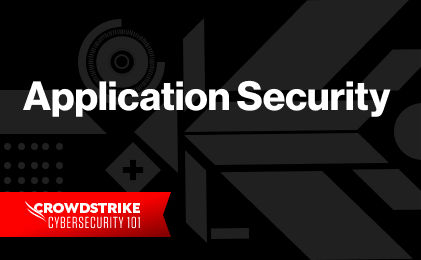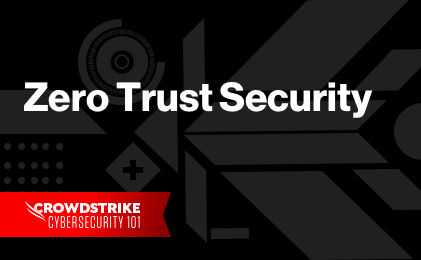Modern businesses rely on numerous software and third-party applications for their daily operations. From the perspective of security, granting wholesale authorization and permissions to all these applications is risky. Therefore, diligent system administrators adopt a practice to safeguard against potential threats and protect sensitive data. This practice is called application whitelisting.1
In this article, we will explore what application whitelisting is, its benefits, and how administrators can implement it.
What is application whitelisting?
Application whitelisting is the approach of restricting the usage of any tools or applications only to those that are already vetted and approved. Organizations adopt this approach by delegating a system administrator or third-party application to manage the list of applications and enforce these restrictions.
Application whitelisting uses the Zero Trust principle, which holds that no resources within an organization may interact with the system without strict authorization. Though sometimes conflated with the principle of least privilege (PoLP), Zero Trust is more comprehensive. PoLP is primarily concerned with access control, but Zero Trust begins with the premise that any action or actor is potentially malicious and, therefore, requires verification.
Blacklisting2 is a less restrictive approach to whitelisting. This approach allows the use of any third-party tools, provided they are not on the blacklist. However, blacklisting doesn’t account for unidentified threats, sometimes resulting in a misleading sense of security.
Benefits of application whitelisting
Application whitelisting provides significant benefits for organizations concerned with security. In addition, application whitelisting also brings benefits related to cost efficiency and legal compliance.
Highly secure work environment
When you implement application whitelisting, you can considerably reduce the chances of a security breach. Provided you carefully establish the list of allowed applications and regularly update it, an incident is less likely. With stricter control over third-party tools comes a significant reduction in potential attack vectors. Whitelisting also inherently increases the granularity of access control, which (in addition to improving security) also reduces the likelihood of costly human errors.
Regulatory compliance
Regulations of certain industries may require some form of application whitelisting for compliance. This is common in sensitive contexts, such as the Payment Card Industry (PCI), where security breaches can bring serious damage to customers. Should an organization grant access to malware or an insecure piece of software, the potential fallout could include financial damages to millions of users worldwide.
Cost reduction
No matter what the current economic climate is, companies are always searching for ways to improve cost efficiency. A strict whitelist means reduced utilization of inefficient and often costly approaches that focus on cleaning up messes rather than preventing them. When a security breach happens, it is usually very costly and can irreversibly harm a company's reputation. Avoiding these incidents ultimately reduces the cost involved in handling them.
Limitations of application whitelisting
Although the benefits are significant, effective application whitelisting can be very challenging to implement. Let’s look at some limitations to consider when deciding whether whitelisting is a good idea for your business.
Higher maintenance
Keeping a whitelist up to date can be exhausting, requiring constant evaluation and immediate reaction from administrators. Constant maintenance is necessary to ensure an organization’s IT system remains protected to the highest degree. Attackers are always searching for new vulnerabilities, so tools considered secure one day may be susceptible to breaches the next.
Because of this, blacklists can be more efficient, as they allow for a wider range of options in such situations. However, there is a tradeoff between efficiency and security needs. You must delicately measure this based on several factors, such as risk tolerance, impact on productivity, and legal requirements.
Difficulties when establishing an initial index
When implementing application whitelisting, you need to consider many factors. A company that has been operating without a whitelist will probably need to wind down some applications currently in use if they don’t meet security requirements. Substituting them can take time and effort. Extensive staff training may also be required for replacement tools. Although the time invested in training is beneficial over the long term, this investment can initially impact the momentum of ongoing projects.
Reduced productivity
Security and productivity tend to be inversely proportional. A high level of security may reduce breaches, but it also introduces various challenges for employees that can impact their productivity. Adhering to security standards often introduces additional steps — some unanticipated — when completing a task. This may increase the overall level of frustration among staff.
By narrowing the set of applications that can be used within your organization, you also inevitably narrow the range of available job seekers who have the desired skill set for properly performing the requirements of a position. This can make the hiring manager’s job more difficult.
Summary
Application whitelisting is one of the more stringent security measures an organization could undertake. However, maintaining a high level of security requires balancing its benefits against the potentially reduced productivity and performance of staff. Industries that are highly regulated must be even more sensitive as they navigate this equation.
Implementing highly restrictive security measures such as application whitelisting can be beneficial, but also counterproductive, depending on how you approach these measures. For this reason, implementing application whitelisting is often best delegated to third-party firms that are experts in these matters.
Discover the world’s leading AI-native platform for next-gen SIEM and log management
Elevate your cybersecurity with the CrowdStrike Falcon® platform, the premier AI-native platform for SIEM and log management. Experience security logging at a petabyte scale, choosing between cloud-native or self-hosted deployment options. Log your data with a powerful, index-free architecture, without bottlenecks, allowing threat hunting with over 1 PB of data ingestion per day. Ensure real-time search capabilities to outpace adversaries, achieving sub-second latency for complex queries. Benefit from 360-degree visibility, consolidating data to break down silos and enabling security, IT, and DevOps teams to hunt threats, monitor performance, and ensure compliance seamlessly across 3 billion events in less than 1 second.
1 Some organizations, including CrowdStrike, refer to whitelisting as allowlisting.2 Some organizations, including CrowdStrike, refer to blacklisting as blocklisting.








